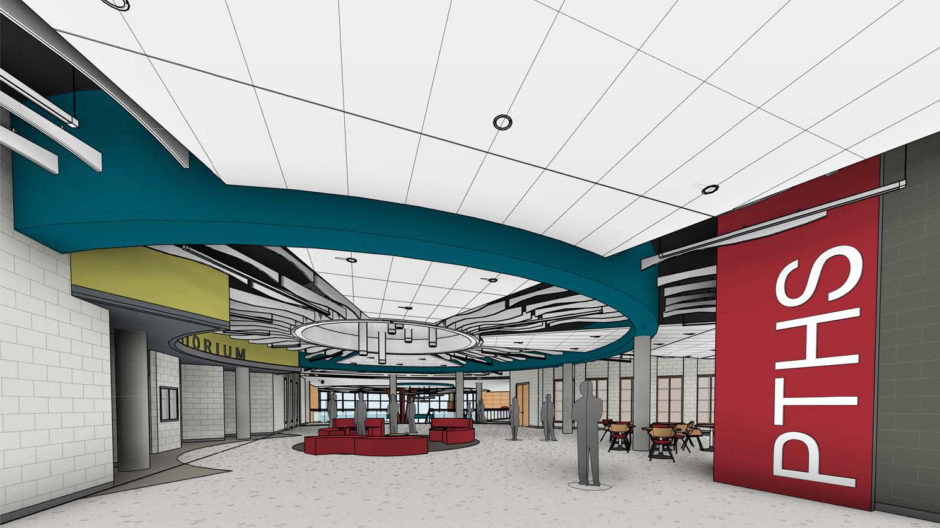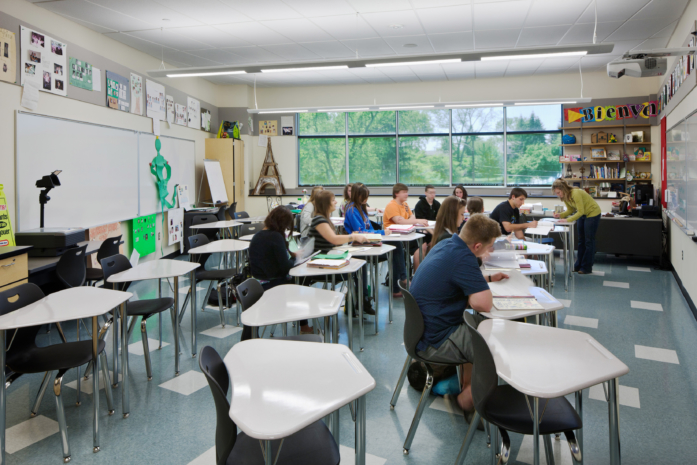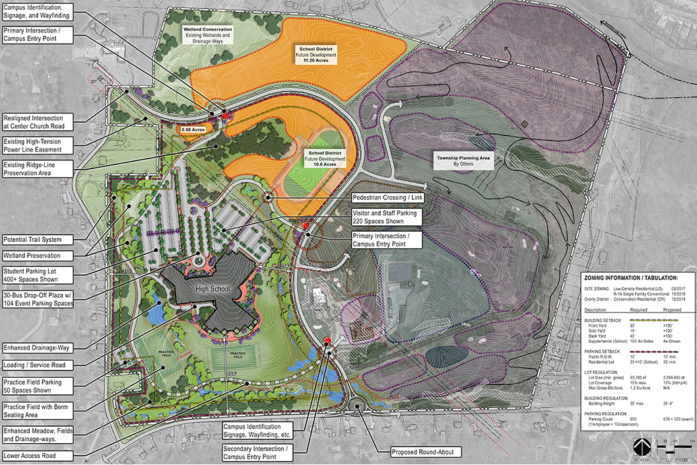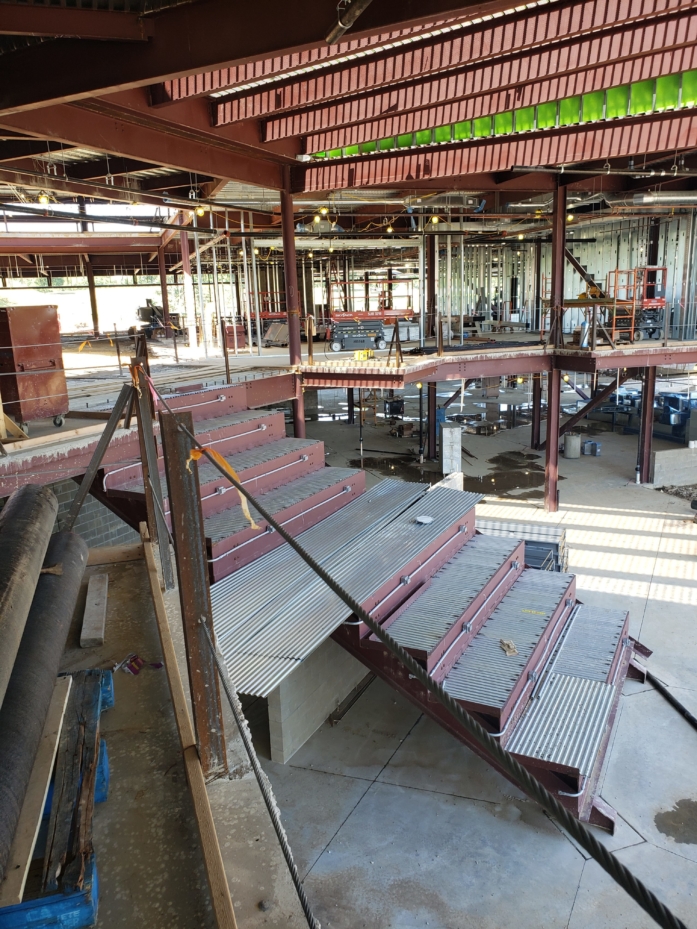Everything They Did Not Tell You About A School Building Project

School Planning, Design and Construction: A Simple Concept, A Complex Process.
This is intended as a primer on surviving a public-school construction project (new or renovation) in Pennsylvania. At this writing, it appears that the State Legislature is pointing toward passing a new bill authorizing and regulating reimbursement for school construction projects. Few details are known, but the intent is to simplify the entire process as compared to the PlanCon process that has been in place since 1974. What is not known is the amount of reimbursement that will be funded as part of each year’s state budget process or how that will be distributed to the Districts in need.
The following a simplified outline of tasks necessary to deliver a complex project overseen by most of the regulatory agencies that exist in Pennsylvania.
Planning
“By failing to prepare, you are preparing to fail.”
A successful public-school project begins with careful (and accurate) planning. This is a once in a generation opportunity for the School Board, the central administration, the building administration, the professional staff and the entire community to think about public education and set goals that can support and inform a host of everyday decisions.
Districts often begin thinking that all they need to do is engage an Architectural Firm experienced in School Design. Most experienced Architectural firms can, indeed help with the following tasks, but these tasks are not included in the typical Agreement between Owner and Architect (and therefor may not be included in the first fee proposal):
- Existing Facility Condition Assessment.
- Facility Equipment Inventory (including future power or other utility connections).
- Hazardous Material testing and remediation.
- Site Environmental assessment. Analysis of zoning and land development requirements.
Most of the above considerations fall into a state mandated District Wide Facility Study which is a separate process from design services. They typically involve a separate fee. In this early study, the District must participate by developing a consensus of the need that they hope to fulfill, including:
- Student enrollment projections (which can, but do not need to involve a Demographer).
- Desired grade configurations for each school building in the District.
- A description of the desired educational program including all spatial needs.
- An analysis of the current financial ability of the District to assume new debt. (Often a financial advisor needs to be retained to look at various options).
The Architectural team should be able to assist in visualizing multiple appropriate options and should be able to provide a dependable estimate of probable construction cost. It is up to the District to factor in all related project costs (professional fees, furniture, equipment, educational technology, financing costs, insurances, utility connections, fees and approvals). If land acquisition is required, there is another set of direct and indirect costs to analyze.
After looking at multiple solutions to the above, the District can determine what scope and characteristics of a project are most appropriate. Almost always, this analysis and the selected strategy is presented publicly. Be prepared, there is seldom a unanimous agreement with the selected option, but typically there is a general consensus.
Design
"Design is not just what it looks like and feels like. Design is how it works."
This is where many Districts thought that they were going to start. The first set of activities in the design process will be the development of a detailed Educational Specification. Districts need to make certain that this process is part of their Basic professional fee, since it is excluded in most standard contracts. Usually, this is accomplished through a series of meetings with professional staff where needs are defined in detail, communicated to the Board and approved as the definition of the desired facility. This involves multiple days of discussion and will almost certainly include special Board meetings.
Based upon this Education Specification, the Architect (who will hire specialty engineers and consultants for civil engineering, structure, heating and cooling, electrical, technology infrastructure, food service, aquatic facilities, and performance venues as appropriate) will prepare visualizations of the facility for discussion, modification, and ultimately approval at multiple phases of design completion. During this process, the District will also:
- Participate in submitting permit applications including:
- Zoning
- Land Development
- Traffic (a traffic study may be required by a separate traffic engineer)
- Environmental Impact
- Storm water management
- Archaeological and Historical impact
- Sewerage connection
- Applications for Natural Gas, Electric, Communications and data services
- Apply and pay for the General Building permit after review and approval of the building plans and specifications by the local municipality.
- Implement a process for financing the project such as a bond issuance or direct borrowing.
- Develop a separate plan, budget, and purchasing strategy for Furniture, Fixtures, and Equipment for all areas of the project. (Generally, if it is not permanently built into the structure, it is purchased separately from the construction) .
- Conduct a Public Hearing including advertisement and distribution of project information, conduct and record the actual hearing, and collect and assemble any written responses received within thirty days.
The District will certainly want to stay current with the development of the design, often through regular updates and specific presentations including:
- Functional and general aesthetic features of the design.
- Plumbing, Heating and Air conditioning systems and controls.
- Electrical systems including lighting, security and alarm systems.
- Educational Technology infrastructure.
- Selection of Basis of Design materials and colors (Interior and Exterior).
Each of the phases of design will be accompanied with a statement of probable cost. Depending upon the estimating experience of the design team the District may choose to engage a Construction Manager or a Third-party estimator to verify the construction cost estimate which will inevitably be the basis of many decisions prior to bidding. The District will also want to be part of developing a bidding strategy that includes both add and deduct alternates to provide some flexibility on bid day.
Bidding
For a five- or six-week time frame the internet will be buzzing with Requests for Information, clarifications, Requests for Substitutions and all of activity that one could imagine given all the Trade Contractors, Subcontractors, and sales organizations that take part in the bidding of a school. Typically, there is a pre-bid conference attended by the Owner’s representatives, but mostly it is a waiting game until bid day.
Upon receipt of the bids, there is a flurry of activity during which the Central Administration and the Architects (optional Construction Manager) will be discussing with the Board the status of the bidders and analyzing the desirability of including add and deduct alternates to the project. After the discovery of the apparent low bidder (based upon the selected alternates), there will generally be a series of meetings to verify that the apparent low bidder included all elements of their scope of work prior to the recommendation to award the contracts. When all of this is complete a pre-construction job conference will be held to introduce the construction team.
Construction
"We shape our buildings; thereafter they shape us."
By far the longest phase, most of the behind-the-scenes work such as project schedules, schedule of values (for billing purposes), thousands (literally) of submittals (of fabrication drawings and manufacturer’s literature) is handled through the Construction Manager and/or Architectural Engineering teams. There are, of course, bi-weekly job conferences at the site, monthly applications for payment which need Board approval, monthly updates for the Board, and usually some number of Change Orders for desired changes.
During the construction there will be the need to finalize several specific components of the new school such as:
- Finalize the room numbering and identification system.
- Approving proofs of various identification and way finding signage.
- Door keying and security system specifics.
- Identification of various Mechanical system identifications (valve tags, electrical circuit diagrams).
But it is also a busy time for Administration as they react to and execute all the final Utility Agreements, and final permit documents.
The various District administrators need to initiate the purchasing of furniture, fixtures, and equipment, including technology equipment. This includes everything that would fall out of the building it turned upside down and shaken such as:
- Tables, desk, chairs, waste paper baskets, file cabinets, computers, monitors, smart screens, projectors, and on and on.
- Food service materials, tools, trays, dishes, and utensils.
- Phys. Ed equipment.
- All the educational materials for classrooms, labs, and special purpose rooms.
- Office furniture and materials.
Some of this may be moved from an existing facility in which case it is up to the Owner to arrange all the logistics of sorting, cleaning, moving, and re-installing the FF&E items into the new facility.
As move in day nears, the Building administration will want to manage:
- Receipt, recording, and storing specified material overruns and maintenance materials
- Participation in training for operational systems (and recording them for future reference)
- Receipt of Maintenance manuals and tools for all building components.
- Monitoring and maintaining commissioning records and reports for the building’s operating systems.
- Participation in pre-final and final punchlists for all area of the buildings to identify defective or incomplete work.
At the point where the facility is “Substantially Complete” (the day that the building is complete enough to function for its intended use), it will be necessarily to assume the responsibilities for payment of building utilities and insurance. The District will receive the facility in a “broom clean” state but will almost always want to do a full cleaning with District Staff, prior to move in.
Post Construction
Finally, it is time to move in and begin to enjoy the new learning environment which you conceived and worked so hard to complete. While the pace will slow down, it is still necessary to be a part of the final close-out of all construction requirements and contracts (and payment of final retainages). It is important to receive and organize the as-builts documents and maintenance manual materials, both in hard copy and electronically.
If your project includes the closing of a previous facility, be aware that there is an entire process for abandoning a school that involves approvals and public meetings.
There are an amazing number of components of your new school and the law of averages guarantees that some percentage of them will fail within the one-year general warranty period or within some of the longer term specified warranty periods. It is important to establish and maintain an accurate log of warranty issues and to communicate those issues with the appropriate contractor to assure that they get fixed.
One year after the date of Substantial Completion, District Staff should accompany the CM and/or AE in a Warranty inspection to identify any remaining defects.
If all of this sounds intimidating, that description is not far off. Most projects spend several months in planning, at least a year in design, and multiple years in construction and move-in. So, there is plenty of time to work your way through all of the responsibilities of the “Owner” (in contract language). Since most District Administrators and Building Administrators already have a full-time job, spending some time planning how to (and who will) shepherd this process is time well spent.

Bethel Park High School Classroom




